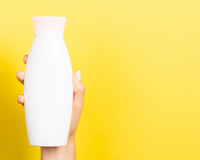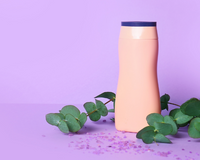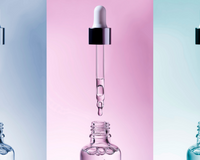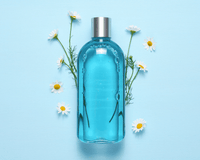Black Owned Black Hair Care Products
If you don't take care of Black hair properly, it can become weak, dry, or broken. There are many black owned black hair care products to keep hair healthy, hydrated, and less likely to break. Black hair comes in many different styles and thicknesses. It often looks like a spiral or a bunch of curls. The curls can be loose or tight. This is because of how the hair follicle is shaped. A hair follicle that is curved makes curly hair, while a hair follicle that is round makes straight hair.
Black hair is different from other types in some important ways. The cuticle is the protective layer on the outside of each hair. Researchers in 2015 found that the cuticle layer of Black hair is thinner than that of other hair types. This means that Black hair strands may break more easily. People of African descent have an average of 90,000 hair follicles, while white people have an average of 120,000. Because of this, hair loss may be more obvious and it may be easier to see a person's scalp.
The scalp makes sebum to keep the skin and hair moist. This oily substance moves down the hair shaft from the scalp to seal in moisture. This is easier to do with straight hair, and curly hair can get dry more easily. There are many ways to take care of your hair. Those that protect it from damage and add moisture can keep your hair healthy, even if it is thin or dry.
What Makes Black Owned Black Hair Care Products Special?
The American Academy of Dermatology (AAD) says that people with tightly curled hair shouldn't wash it more than once a week. When you wash your hair more often, care products and some sebum can be washed away. This can dry out the scalp and hair. People who have scalp problems like dandruff or seborrheic dermatitis may need to wash their hair more often. For example, a dermatologist might tell you to wash your face twice a week.
It's also important to choose the right shampoo. Some regular and anti-dandruff shampoos have harsh ingredients like sulfates that can strip the hair of its natural oils and dry it out. This makes the hair harder to comb and more likely to break. Look for gentle and hydrating shampoos, and use a conditioner every time you wash your hair. Make sure the conditioner coats the ends of your hair. Massage the scalp gently as you wash your hair. Don't rub the hair dry. Instead, pat it dry with a towel.
Conditioner
A person could try deep conditioning or oil treatment once or twice a month in addition to using conditioner every time they wash their hair. This makes the hair moister. Apply a deep conditioner or natural oil like jojoba to the hair and scalp after shampooing. Wrap the hair in a warm towel and leave it alone for up to 30 minutes.
Choose an oil that melts at body temperature when you want to use it. This keeps you from having to heat the oil before you use it. A person might have to try different oils to find the one that works best for their hair.
Hair Combs
Curly hair is easy to tangle, which makes it more likely to break when you brush it. Because of this, you shouldn't comb textured hair when it's dry. Instead:
- While the hair is still wet, use a moisturizer or leave-in conditioner.
- Separate the hair into pieces.
- Use a wide-toothed comb or a detangling comb to comb each section. Use gentle strokes and start at the ends of the hair.
- Move up the hair shaft slowly until each section is free of knots.
- If the hair is not already wet, it can be dampened with a spray bottle of water.
Black Hair Care Tips
Before going to bed, take off any tight hand bands. Use a silk or satin hair wrap with a smooth surface to cut down on friction. Use a silk or satin case for your pillow. Split ends happen to all hair over time. Regularly cutting the ends of your hair can keep it healthy and help it grow.
Heat can make a lot of different styles possible. Curling irons and hot rollers can be used to make waves or loose curls. A person could also use a straightener that heats up. But it's important to remember that heat dries out hair and can cause damage over time.
When someone chooses heat styling, it can help:
- Use tools with ceramic coatings.
- Use the least amount of heat.
- Wait until the hair has been washed and dried.
- Use something to protect against heat.
- Use the hot tool no more than once a week.
Even if you take these steps, heat damage may still happen.
Braids
The shape, style, and level of difficulty of braided hairstyles can vary a lot. A person could have simple braids for one day or tighter braids for several weeks. But braids that are too tight can pull on the scalp and make it more likely that the hair will break, itch, or fall out. This is called traction alopecia.
Traction alopecia is when hair falls out because of constant pulling on it. If a person gets treatment early, it can be fixed, but the hair won't grow back if they keep wearing tight styles for a long time. When getting treatment for traction alopecia, a person should choose styles that don't pull on the scalp and have low tension.
Keep braids as loose as you can, and tell the stylist to stop if braiding hurts. Also, changing the direction of your braids often can make the scalp less tight. Don't use rubber bands or bands with a metal join to hold braids together.
Locs
To get locs, you lock, twist, or mat your hair into long, rope-like strands that can be thin or thick. Locs take time to make and can't be taken back. They also need special care to keep them from coming apart. Before getting locs, you should talk to a stylist about how to care for them.









